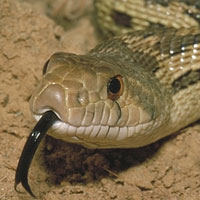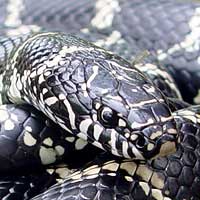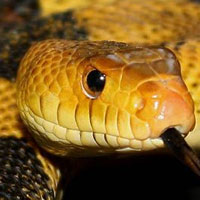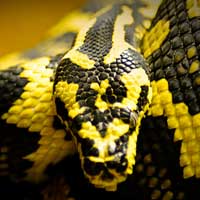The Copperhead Snake: All You Need to Know
The Copperhead (Agkistrodon contortrix) belongs to the Viperidae snake family, a group known for its venomous species equipped with heat-sensing pits and hinged fangs, making it an effective predator in its natural habitats across the eastern and central United States.
Scientific Name: Agkistrodon contortrix
Snake Family: Viperidae
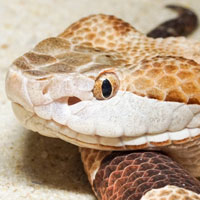
An Overview of the Copperhead Snake
The Copperhead snake (Agkistrodon contortrix) is a venomous pit viper found in the United States, known for its distinctive copper-colored head and banded body. While its venom is mild compared to other venomous snakes, it is still capable of causing serious discomfort. This snake is commonly found in wooded areas and plays a critical role in controlling rodent populations.
Where Can You Find the Copperhead?
The Copperhead thrives in a variety of habitats across its range in the United States. Its adaptability allows it to live in diverse environments. Key habitat characteristics include:
- Geographic Range: Found in the eastern and central United States, from Texas to New York.
- Preferred Terrain: Deciduous forests, rocky outcroppings, swamps, and grasslands.
- Climate: Prefers temperate climates with moderate humidity levels.
Below is a summary of its habitat preferences:
| Habitat Feature | Description |
|---|---|
| Geographic Range | Eastern and central United States |
| Preferred Terrain | Forests, rocky areas, grasslands |
| Climate | Temperate |
What Does the Copperhead Eat?
The Copperhead is a carnivorous predator with a diet that consists of:
- Primary Prey: Rodents, such as mice and voles.
- Occasional Prey: Amphibians, birds, and insects, including large cicadas.
- Hunting Strategy: An ambush predator, it uses its heat-sensing pits to detect warm-blooded prey before striking.
The Copperhead’s hunting tactics and diet contribute to its role as an effective population controller for pests in its environment.
Understanding the Copperhead's Behavior
The Copperhead is generally docile but will defend itself if threatened. Key behavioral traits include:
- Activity Pattern: Mostly active during the evening and night in warmer months, but may be active during the day in spring and fall.
- Social Structure: Solitary, except during mating season or hibernation.
- Defensive Behavior: Relies on camouflage to avoid threats but will strike if stepped on or cornered.
Its behavior makes the Copperhead one of the more tolerant venomous snakes, often giving a warning bite with little venom if provoked.
Health and Lifespan of the Copperhead
The Copperhead snake has a moderate lifespan and faces various health challenges in the wild. Important aspects include:
- Lifespan: Typically 10-15 years in the wild, up to 20 years in captivity.
- Common Health Concerns: Parasitic infections and injuries from predators or prey.
- Predators: Birds of prey, raccoons, and larger snakes pose threats, particularly to juveniles.
In captivity, controlled environments and regular veterinary care help extend their lifespan significantly.
How Does the Copperhead Reproduce?
Reproduction in Copperheads is seasonal and fascinating. Key details include:
- Mating Season: Occurs in spring and early fall.
- Reproductive Method: Ovoviviparous, giving birth to live young.
- Litter Size: Typically 3-10 offspring per litter.
- Hatchling Survival: Juveniles are independent and venomous from birth but face high predation rates.
This snake’s reproductive success ensures its population remains stable across its range.
Safety Tips for Handling the Copperhead
Handling a Copperhead requires expertise and caution. Essential safety measures include:
- Always use proper tools like snake hooks and secure containers.
- Wear protective gloves and boots to reduce bite risk.
- Ensure enclosures are escape-proof and mimic natural habitats.
- Keep antivenom accessible and know local emergency protocols.
Only trained professionals should handle this species to ensure both human safety and the welfare of the snake.
Disclaimer
The information provided in this article is for educational purposes only. SnakeEstate strongly advises against handling or interacting with venomous snakes, such as the Copperhead, unless you are a trained and licensed professional. These snakes pose significant risks, and improper handling can result in serious injury or death. Always adhere to local regulations and prioritize safety when dealing with wildlife.
Other Snakes In This Species
 Asp Viper
Asp Viper Black Mamba
Black Mamba Boomslang
Boomslang Brazilian Coral Snake
Brazilian Coral Snake Bushmaster
Bushmaster Coastal Taipan
Coastal Taipan Common Death Adder
Common Death Adder Common European Adder
Common European Adder Copperhead
Copperhead Coral Snake
Coral Snake Cottonmouth
Cottonmouth Eastern Brown Snake
Eastern Brown Snake Eastern Diamondback Rattlesnake
Eastern Diamondback Rattlesnake Egyptian Cobra
Egyptian Cobra Fer-de-lance
Fer-de-lance Forest Cobra
Forest Cobra Indian Cobra
Indian Cobra Inland Taipan
Inland Taipan Jameson’s Mamba
Jameson’s Mamba King Cobra
King Cobra Lancehead
Lancehead Lataste’s Viper
Lataste’s Viper Malayan Krait
Malayan Krait Mojave Rattlesnake
Mojave Rattlesnake New Guinea Small-eyed Snake
New Guinea Small-eyed Snake Nose-horned Viper
Nose-horned Viper Puff Adder
Puff Adder Russell’s Viper
Russell’s Viper Saw-scaled Viper
Saw-scaled Viper Solomon Island Coral Snake
Solomon Island Coral Snake South American Rattlesnake
South American Rattlesnake Tiger Snake
Tiger Snake Western Diamondback Rattlesnake
Western Diamondback Rattlesnake



